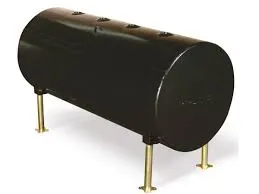Sep . 28, 2024 06:26 Back to list
Hydraulic Cylinder Rod Ends Manufacturing Solutions for Optimal Performance and Reliability
Hydraulic Cylinder Rod Ends A Comprehensive Overview
Hydraulic systems are pivotal in various industries, powering machines and equipment that rely on fluid power for their functionality. At the heart of these systems are hydraulic cylinders, which convert hydraulic energy into linear motion. An essential component of hydraulic cylinders is the rod end, often overlooked yet crucial for optimal performance. This article delves into the significance of hydraulic cylinder rod ends, their manufacturing process, and their applications across different sectors.
Understanding Hydraulic Cylinder Rod Ends
Hydraulic cylinder rod ends are designed to connect the hydraulic piston rod to the external components. They play an essential role in transmitting force from the hydraulic cylinder to the machinery it operates. Rod ends can come in various configurations, including threaded, clevis, and spherical types. Each configuration serves a specific purpose, depending on the movement requirements of the machinery. The choice of rod end significantly influences the efficiency, range of motion, and overall effectiveness of the hydraulic system.
Key Features of High-Quality Rod Ends
The production of hydraulic cylinder rod ends necessitates precision and attention to detail. High-quality rod ends must exhibit several characteristics
1. Durability Rod ends are exposed to significant stress and wear due to their constant movement and the forces they encounter. Therefore, durable materials such as high-strength steel or specialized alloys are commonly used to ensure longevity.
2. Precision Engineering Manufacturing processes must involve precision machining to ensure proper fit and function. The finer the tolerance, the better the rod end will perform, reducing the risk of leaks and failures.
3. Corrosion Resistance Given the harsh environments in which hydraulic systems often operate, rod ends should have coatings or treatments that protect them from corrosion and wear, extending their service life.
4. Flexibility and Range of Motion Depending on the application's requirements, some rod ends must accommodate angular misalignment and allow for free movement. Spherical rod ends, for example, provide versatility in handling dynamic loads.
The Manufacturing Process
The process of manufacturing hydraulic cylinder rod ends typically involves several steps
hydraulic cylinder rod ends factory

1. Material Selection The selection of appropriate materials is crucial. High-strength steel, stainless steel, or other composites may be chosen based on the intended application.
2. Machining The raw materials undergo machining, where they are cut and shaped to size using CNC (Computer Numerical Control) machining technology. This ensures accuracy and repeatability in the production process.
3. Surface Treatment After machining, the rod ends often undergo surface treatments like hardening, anodizing, or coating to enhance their durability and corrosion resistance.
4. Inspection and Testing Quality control is paramount. Each rod end is inspected for dimensional accuracy and tested for strength and durability. This step helps identify any defects before they are sent into the field.
Applications of Hydraulic Cylinder Rod Ends
Hydraulic cylinder rod ends find applications in a multitude of industries, including
- Construction In heavy machinery like excavators and cranes, rod ends facilitate movement and control of hydraulic systems, ensuring operational efficiency. - Agriculture Farm equipment, such as tractors and harvesters, utilizes hydraulic systems for various functions, where rod ends play a crucial role in machine operation.
- Manufacturing In automated production lines, hydraulic cylinders equipped with rod ends operate machinery for tasks like pressing, lifting, and moving components.
- Aerospace and Automotive In these industries, precision and reliability are paramount. Hydraulic systems reliant on rod ends are used in various applications, from landing gear to transmission systems.
Conclusion
In conclusion, hydraulic cylinder rod ends are vital components that significantly influence the efficiency and reliability of hydraulic systems across various industries. From their manufacturing process to their wide-ranging applications, understanding rod ends underscores their importance in modern machinery and equipment. Investing in high-quality rod ends not only ensures optimal performance but also contributes to the longevity and safety of hydraulic systems. As industries continue to evolve and innovate, the demand for reliable hydraulic components like rod ends will only grow stronger.
-
Fork Lift Power Units - Hebei Shenghan | Efficiency, Reliability
NewsJul.13,2025
-
1.5-Ton Turbocharged Cylinder-Hebei Shenghan|Hydraulic Solution,Energy Efficiency
NewsJul.13,2025
-
Auto Hoist Power Units-Hebei Shenghan|Efficiency&Industrial Lifting
NewsJul.13,2025
-
Double Acting Power Units-Hebei Shenghan|Hydraulic Solutions,Industrial Efficiency
NewsJul.13,2025
-
1.5 Ton Lifting Cylinder 70/82-40-290-535 - High-Performance Hydraulic Solution | Hebei Shenghan
NewsJul.13,2025
-
Fork Lift Power Units - Hebei Shenghan | Efficiency&Reliability
NewsJul.13,2025
